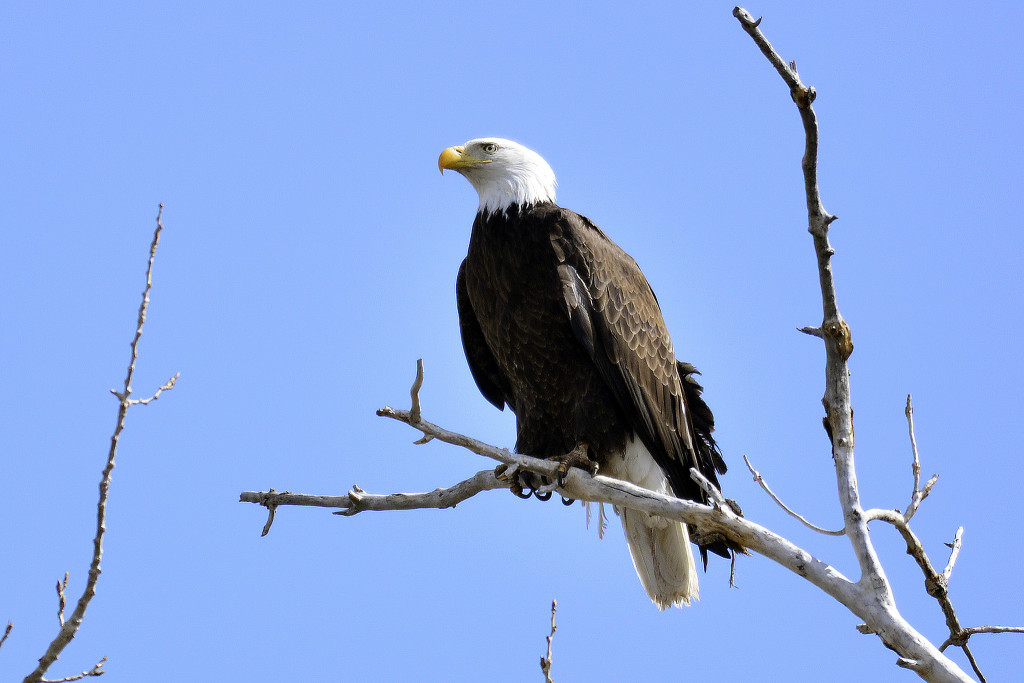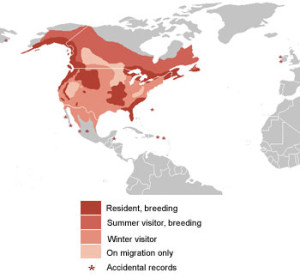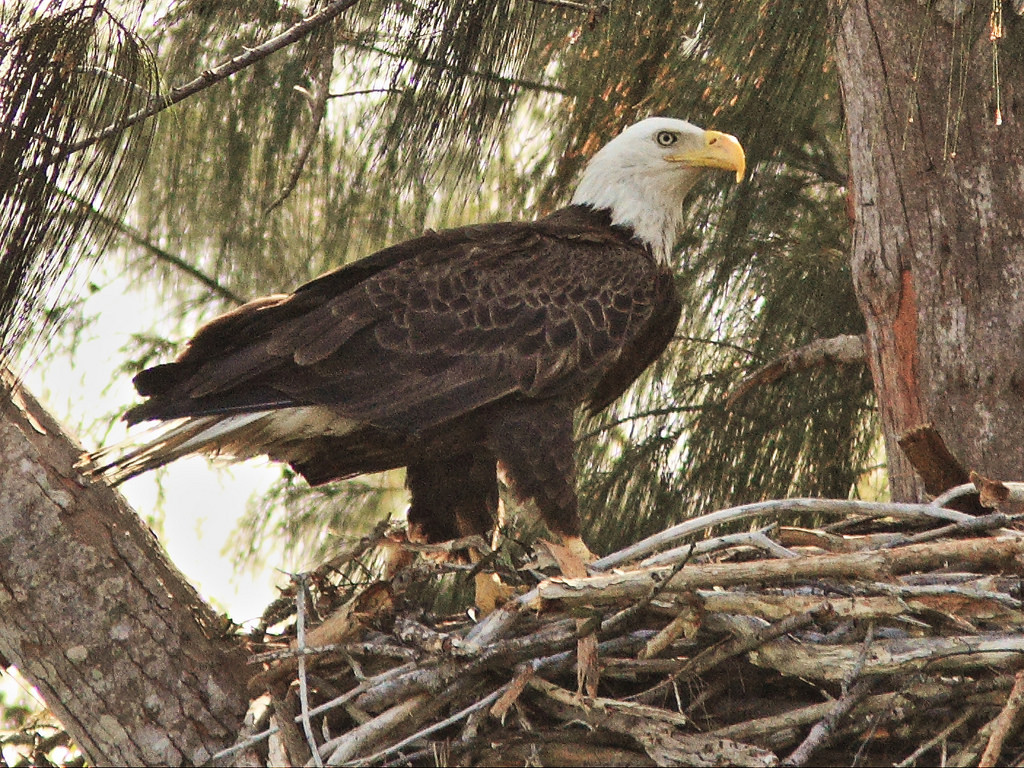Haliaeetus leucocephalus
- Sensitive – U.S. Forest Service
- Fully Protected – California Department of Fish and Wildlife

Photo courtesy of Bill Evans
Natural History
Bald eagles are a rare sight to see. With a wingspan of 6 – 8 feet, the bald eagles is the largest true raptor in North America and the second largest bird in North America (with the largest being the California condor). They range throughout most of North America and they can be found in the Los Padres National Forest most commonly in the winter months. Breeding has been confirmed near the Los Padres National Forest and areas like Lake Nacimiento, Lake Cachuma, and Lake Casitas where suitable habitat exists. Bald eagles live near rivers, lakes, marshes, and occasionally the ocean where they primarily eat fish, but also waterfowl, turtles, rabbits, snakes, other small animals, and carrion. These raptors are migratory and travel great distances, but usually return to breed within 100 miles of their birthplace.
 Bald eagles mate for life and create their nests at the tops of large trees which they typically use and enlarge each year. Over time, nests can become as large as 10 feet across and weigh up to half a ton. Breeding eagles usually lay one to three eggs each year, which hatch after about 35 days. Chicks are flying after 3 months and then go off onto their own a month later. In the wild, bald eagles typically live about 15 – 25 years, and slightly longer in captivity.
Bald eagles mate for life and create their nests at the tops of large trees which they typically use and enlarge each year. Over time, nests can become as large as 10 feet across and weigh up to half a ton. Breeding eagles usually lay one to three eggs each year, which hatch after about 35 days. Chicks are flying after 3 months and then go off onto their own a month later. In the wild, bald eagles typically live about 15 – 25 years, and slightly longer in captivity.
Decline of Bald Eagles
The first major decline of bald eagles began in the mid to late 1800s, coinciding the overhunting of many other species. Although they primarily eat fish and carrion, bald eagles were once thought to prey heavily on chickens, lambs, and domestic livestock, and as a result bald eagles and other large raptors were shot in an effort to eliminate this perceived threat. Coupled with the loss of habitat and proper nesting trees, bald eagles underwent a steep decline. In 1940, Congress noted that the species was “threatened with extinction” and passed the Bald Eagle Protection Act, which prohibited killing, selling, or possessing the species. The act was later amended to include protections for golden eagles in 1962 as the Bald and Golden Eagle Protection Act.
Bald eagle populations also suffered greatly from the adverse effects of DDT and by 1963 only 417 nesting pairs remained in the world.

Photo courtesy of Kenneth Cole Schneider
Bald Eagle Recovery and Conservation
In 1967, the Secretary of the Interior listed bald eagles below the 40th parallel under the Endangered Species Act of 1967. Following Rachel Carson’s book Silent Spring, the EPA went on to ban the use of DDT in the US in the year 1972. In 1978, bald eagles were listed as endangered under the Endangered Species Act of 1973 throughout the lower 48 except in Michigan, Minnesota, Oregon, Washington, and Wyoming, where they were designated as threatened. Under the full protection of the ESA and with DDT banned, bald eagle populations grew and by July 1995 the species’ status was lowered to threatened. In June of 2007, bald eagle populations had risen to at least 9,789 breeding pairs and the USFWS officially removed the bald eagle from the ESA on Thursday, June 28, 2007.
Bald eagles remain fully protected under the Bald and Golden Eagle Protection Act and the Migratory Bird Treaty Act which both prohibit the killing, selling, or otherwise harming of eagles, their nests, or eggs. Los Padres ForestWatch will continue to work to safeguard habitat for bald eagles by protecting and restoring our local rivers, lakes, and water sources.






